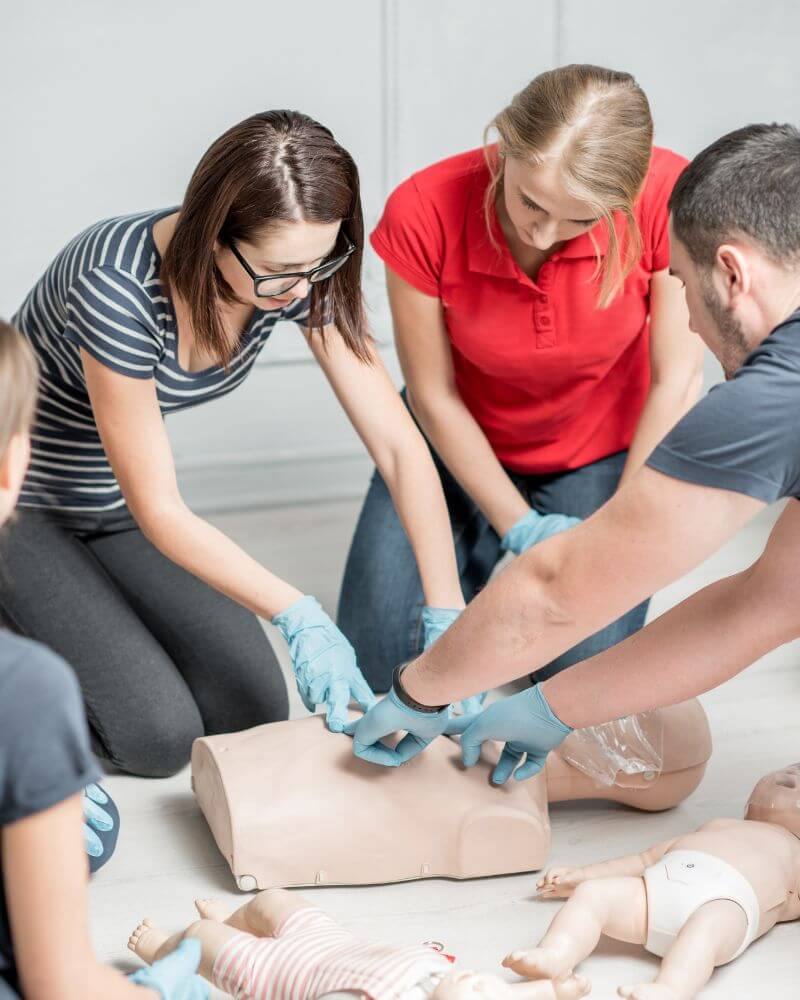Introduction
In today's busy workplace, safety and security is vital. Organizations are increasingly identifying the relevance of developing a safe area for employees. Among the most vital elements of office security training is initial help and CPR (Cardiopulmonary First Aid Course Midland Resuscitation) courses. These programs not just empower workers with crucial life-saving abilities however also foster a culture of safety and security within the company. In this post, we will certainly delve into the myriad reasons that office safety training should consist of first aid and CPR training courses, highlighting their relevance in improving workplace safety.

Why Workplace Safety and security Training Need To Consist Of Emergency Treatment and CPR Courses
The integration of emergency treatment and mouth-to-mouth resuscitation programs right into workplace security training has significant benefits. They equip staff members with the knowledge and skills necessary to respond efficiently to medical emergencies, lower recovery time for injured individuals, and potentially save lives. Additionally, having actually educated employees on-site can infuse self-confidence among staff members and comfort them that their well-being is prioritized.
Understanding Initial Aid
First help describes the immediate treatment provided to a private suffering from a small or significant ailment or injury until professional clinical aid shows up. Comprehending standard emergency treatment concepts can make a considerable distinction in emergency situations.
Key Parts of First Aid
Assessment: The capacity to assess a scenario quickly can help identify the ideal actions needed. Stabilization: Understanding just how to support a hurt person stops more harm. Communication: Successfully connecting with emergency solutions is important for timely assistance.The Importance of CPR
CPR is a life-saving technique utilized in emergency situations when somebody's heartbeat or breathing has stopped. It entails upper body compressions and rescue breaths to maintain blood flow and oxygenation until expert help arrives.
How CPR Works
- Chest Compressions: These aid flow blood throughout the body. Rescue Breaths: These supply oxygen to the lungs.
Benefits of Emergency treatment and Mouth-to-mouth Resuscitation Certification
Obtaining a first aid certificate or completing mouth-to-mouth resuscitation programs comes with various benefits, both for people and organizations.
Enhanced Staff member Confidence: Staff members really feel a lot more safe understanding they possess life-saving skills. Reduced Healing Time: Quick response through first aid can result in better outcomes for injured individuals. Compliance with Regulations: Numerous sectors need certified workers as part of their health and wellness regulations.Creating a Culture of Safety And Security Through Training
Implementing emergency treatment and mouth-to-mouth resuscitation training cultivates a society that prioritizes employee health.

Encouraging Teamwork
Training sessions commonly entail team-building workouts that boost collaboration amongst employees.
Building Depend on Between Workers and Management
When administration purchases staff member training, it shows commitment to their health, leading to boosted morale.
First Help Flows vs. Mouth-to-mouth Resuscitation Courses: What's the Difference?
While both kinds of training courses are essential, they focus on different ability sets.
First Help Courses
These programs cover a variety of subjects beyond just heart emergencies, including:
- Wound care Burns Choking
CPR Courses
CPR courses particularly concentrate on methods connected to cardiac arrest situations, stressing:
- Adult CPR Child/ infant resuscitation Use of an Automated External Defibrillator (AED)
Choosing the Right Training Provider
Not all training carriers are produced equal; consequently, selecting one that satisfies your organization's needs is critical.
Accreditation Matters
Ensure that your selected company uses recognized training courses identified by pertinent authorities.
Instructor Experience
Consider instructors' qualifications; seasoned fitness instructors commonly supply richer learning experiences http://gregoryimfe659.theglensecret.com/the-benefits-of-team-training-in-emergency-treatment-and-cpr-courses via real-world examples.
Incorporating First Aid right into Workplace Safety Policies
Organizations must incorporate first aid needs into their broader safety policies for extensive coverage.
Regular Training Updates
Conducting normal correspondence course guarantees that knowledge stays current amongst employees.
Creating Emergency Action Plans
Having clear strategies in position can guide trained personnel throughout emergencies.
Legal Implications of First Aid Training in the Workplace
Employers have legal obligations pertaining to work environment safety and security; applying emergency treatment training can aid mitigate threats related to non-compliance.

Negligence Claims
Failure to offer sufficient training may leave companies at risk to claims if a case happens because of lack of preparedness.
FAQ Section
What is included in a typical emergency treatment course?- A regular first aid course includes direction on assessing injuries, treating wounds, taking care of burns, taking care of choking incidents, and executing mouth-to-mouth resuscitation if necessary.
- Most mouth-to-mouth resuscitation training courses last in between 4-- 6 hours depending on whether it's basic or advanced training.
- While not always legitimately mandated, having accredited team member can considerably boost office safety and security standards.
- Many certified companies use online revival choices for emergency treatment certificates which include assessments through video clip conferencing.
- Yes, sectors such as building and construction, health care, education and learning, and manufacturing frequently have regulative needs demanding skilled personnel on site.
- It's recommended that employees join correspondence course every two years or quicker if there are significant modifications in treatments or regulations.
Conclusion
To summarize, integrating first aid and CPR right into office safety training is not simply an alternative however a necessity in today's work environments where emergency situations can arise anytime. Organizations advantage exceptionally from having educated personnel all set to respond effectively during crises while promoting an atmosphere where worker well-being takes precedence over all else. Consequently, it comes to be noticeable why work environment safety and security training ought to include first aid and CPR courses-- they conserve lives while promoting a positive approach toward health and safety criteria within organizations across numerous sectors.
By focusing on such important training campaigns-- emergency treatment certificates acquired with respectable suppliers along with useful hands-on experience-- companies can substantially improve their overall emergency situation preparedness levels while also building stronger teams capable of tackling any type of scenario head-on!